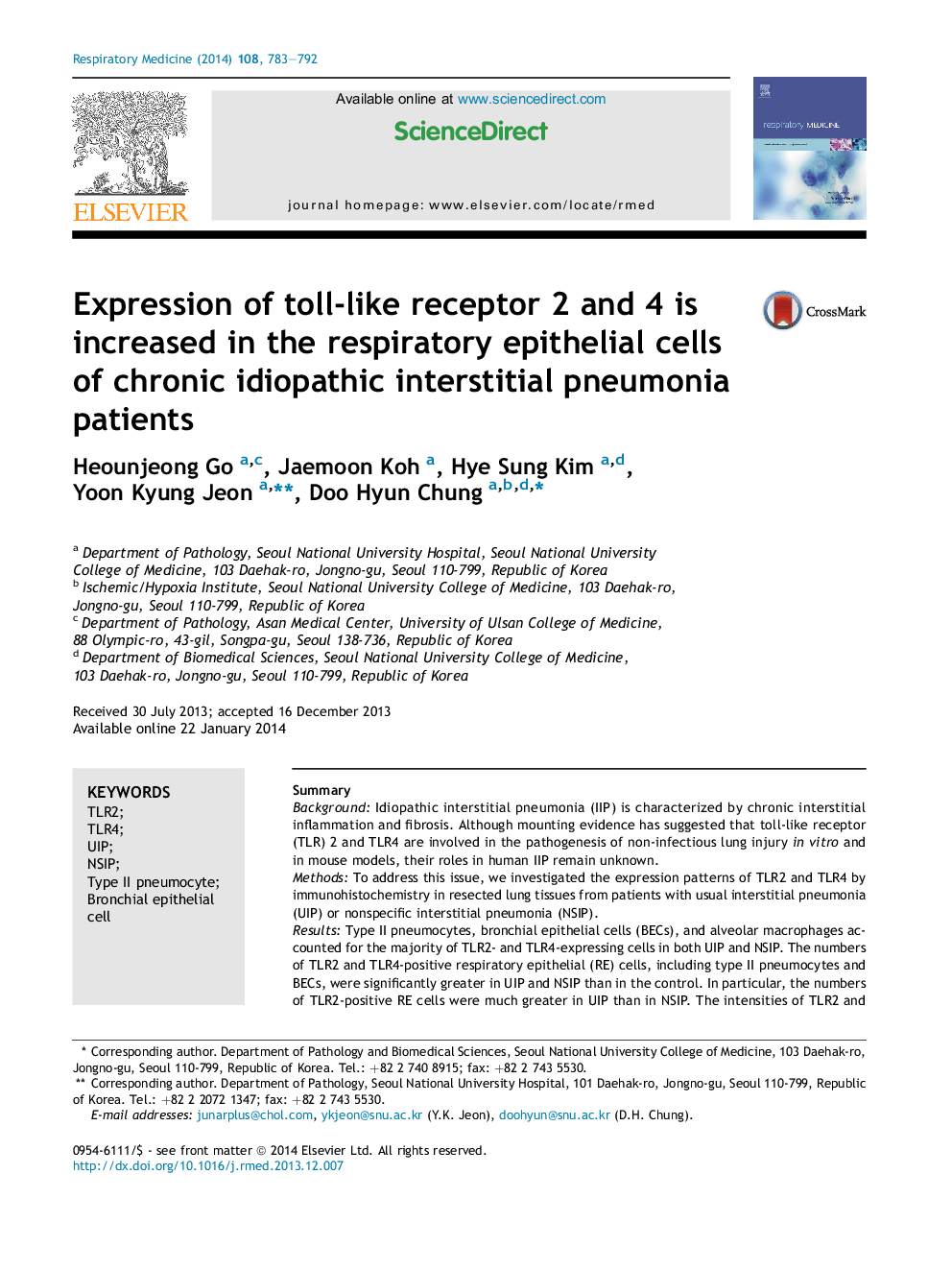| Article ID | Journal | Published Year | Pages | File Type |
|---|---|---|---|---|
| 4210285 | Respiratory Medicine | 2014 | 10 Pages |
SummaryBackgroundIdiopathic interstitial pneumonia (IIP) is characterized by chronic interstitial inflammation and fibrosis. Although mounting evidence has suggested that toll-like receptor (TLR) 2 and TLR4 are involved in the pathogenesis of non-infectious lung injury in vitro and in mouse models, their roles in human IIP remain unknown.MethodsTo address this issue, we investigated the expression patterns of TLR2 and TLR4 by immunohistochemistry in resected lung tissues from patients with usual interstitial pneumonia (UIP) or nonspecific interstitial pneumonia (NSIP).ResultsType II pneumocytes, bronchial epithelial cells (BECs), and alveolar macrophages accounted for the majority of TLR2- and TLR4-expressing cells in both UIP and NSIP. The numbers of TLR2 and TLR4-positive respiratory epithelial (RE) cells, including type II pneumocytes and BECs, were significantly greater in UIP and NSIP than in the control. In particular, the numbers of TLR2-positive RE cells were much greater in UIP than in NSIP. The intensities of TLR2 and TLR4 expression in type II pneumocytes were also significantly stronger in UIP and NSIP than in the control. A comparison of the TLR expression patterns between the fibroblastic and fibrotic areas in UIP indicated that the numbers TLR2 and TLR4-positive RE cells were similar in fibroblastic areas, whereas the TLR2-positive RE cells outnumbered the TLR4-positive RE cells in the fibrotic areas.ConclusionsThis study demonstrates that RE cells over-express TLR2 and TLR4 in the lungs of IIP patients. These findings suggest that high expression of TLRs may contribute to the pathogenesis of human IIP.
